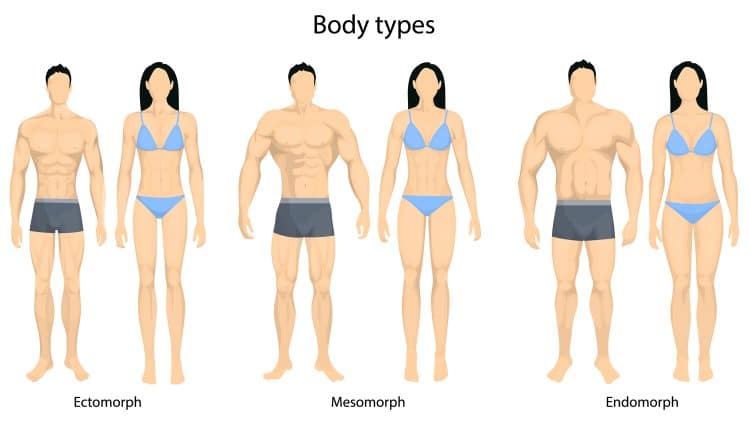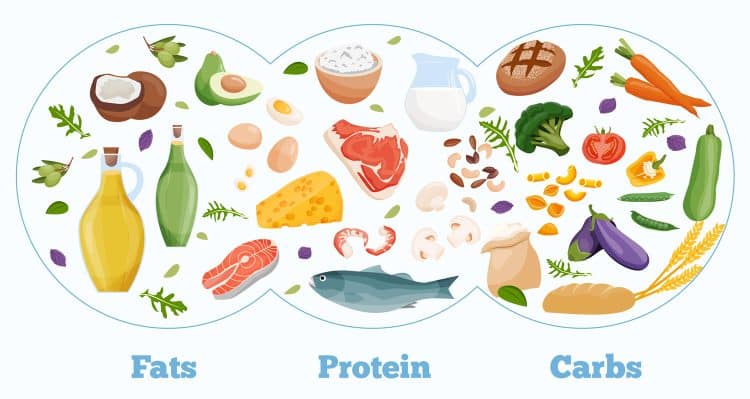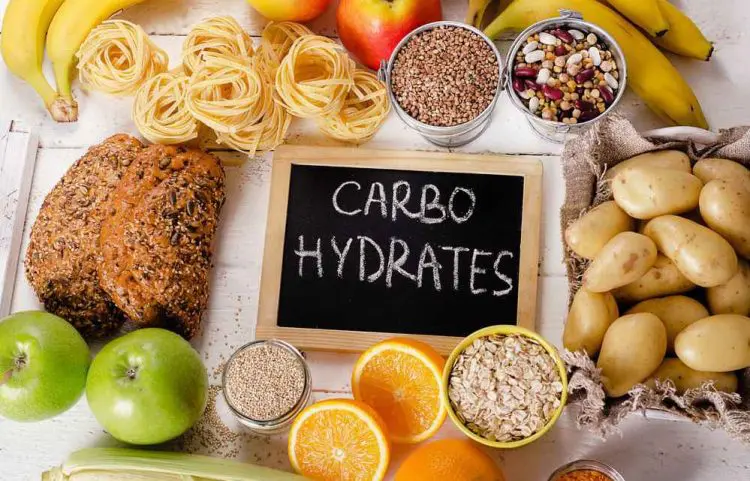A few months into training, you realize that the muscle-building process works differently for everyone. Some build muscles effortlessly, while others struggle for every ounce.
Some people have an ideal structure for bodybuilding: broad shoulders, narrow hips, and full, round muscle bellies. Others have the opposite: wide hips, narrow shoulders, and lean, bony limbs.
Your genetics and somatotype influence your gains. Mesomorphs have the best structure for building muscle. You are lucky if you are one of them, but you can only benefit from your natural advantage if you know how to train and eat for your body type. This article details eating and training for your mesomorph body type.
What’s your Somatotype?
William Herbert Sheldon, a psychologist, developed the concept of somatotypes in the 1940s. He classified humans into three basic body shapes:
Here’s a brief overview of each somatotype.
Level Up Your Fitness: Join our 💪 strong community in Fitness Volt Newsletter. Get daily inspiration, expert-backed workouts, nutrition tips, the latest in strength sports, and the support you need to reach your goals. Subscribe for free!
Ectomorph
Ectomorphs have a lighter physique, are taller and skinnier, and have lean muscle development. They typically struggle to put on weight due to their fast metabolism.
Endomorph
Endomorphs generally have wide hips, small shoulders, and excess body fat. With a slow metabolism, they find it easy to gain weight and difficult to lose it.
Mesomorph
Mesomorphs have naturally muscular and lean bodies. They can easily reduce fat and build muscle due to their balanced metabolism. Mesomorphs are naturally strong with broad shoulders and slim hips.
Most people are a mix of the three somatotypes but have characteristics of one. Compare yourself to the descriptions above to decide which category you fall into. If you conclude you’re a mesomorph, you’re better disposed to build a lean, muscular physique.
Tip: Not sure what your body type is? Take our quiz!
3 Mesomorph Characteristics
Here are the three main mesomorph attributes:
- Athletic body structure: Wide shoulders and an athletic build make untrained mesomorphs look like they’ve been working out for years.
- High energy levels: High energy levels are typical due to their robust physical structure. Some mesomorphs may have excessive energy, indicating an optimal metabolic rate.
- Respond well to dieting and training: Mesomorphs usually respond well to diet and exercise but can quickly gain weight if they stop either.
Mesomorph Diet for Lean Muscle Gain
Although mesomorphs have a genetic advantage in building muscle, a calorie surplus is necessary for muscle gain. Extra calories provide the building material for new muscle. Without them, you cannot get bigger.
To switch to an effective calorie surplus plan, determine your average daily calorie consumption. Your total daily energy expenditure (TDEE) represents the calories you need to meet your daily energy needs.
First, work out your basal metabolic rate (BMR). It’s the calories you’d need in a day if you did nothing but lie on the couch.
To work out your basal metabolic rate, use this formula:
BMR = Body weight in pounds x 14
If you weigh 180 pounds, your BMR would be:
180 x 14 = 2,520
To determine your total daily energy expenditure, multiply your BMR by an activity factor representing your work level.
Choose one of the three activity levels:
- Moderately active (1.3): You work out 3-4 times per week and have a sedentary job.
- Very active (1.6): You work out 4-5 times per week and have a moderately active job.
- Extremely active (1.8): You work out 4-5 times per week and have a very active job.
Let’s say our 180-pound guy fits into the moderately active category. He would multiply his BMR by 1.3.
2,520 x 1.3 = 3,276
So, a 180-pound guy who trains four times per week and has a sedentary job needs to consume just under 3,300 calories per day to maintain his physique. Our goal is not to stay the same but to add muscle tissue.
That’s why we need to add extra calories.
We recommend adding 500 calories to your TDEE.
3,276 + 500 = 3,776
Mesomorph Macronutrients
Now that you know how many calories you need to build muscle as a mesomorph, let’s break things down to a macronutrient level.
A key difference between the three somatotypes is insulin sensitivity. Ectomorphs are very insulin-sensitive, endomorphs are not, and mesomorphs are in the middle. This means mesomorphs can take in a moderate amount of carbohydrates at around 2g per pound of body weight.
Protein intake is similar across all somatotypes — 1.25-1.5 grams per pound of body weight. The remaining calories will consist of healthy fats.
Here are the macronutrient numbers for a 180-pound mesomorph:
Protein Intake
180 x 1.3 = 234 grams of protein
A gram of protein contains four calories. That means 936 calories (234 x 4) will come from protein daily.
Carbohydrate Intake
180 x 2 = 360 grams of carbohydrates
There are four calories per gram of carbohydrate, meaning 1,440 calories (360 x 4) will come from carbohydrates.
Fat Intake
The fat intake for our 180-pound guy will be the balance of calories after deducting protein and carbs from the total daily calorie intake.
The protein intake is 936 calories. To that, we add the 1,440 calories from carbs. On subtracting these calories from our daily total (3,776), we get 1,400 calories.
So, 1,400 calories each day must come from fats. There are 9g of fat in every calorie. When we divide 1,400 by 9, we come to 155 grams of fat.
We have now determined that a 180-pound mesomorph needs the following macros to build muscle:
- Protein: 234 grams (936 calories)
- Carbohydrates: 360 grams (1,440 calories)
- Fats: 155 grams (1,400 calories)
The Best Foods for Mesomorphs
Now that you know the macro breakup you need to follow to gain lean muscle mass, ensure you are plugging the right foods into those slots. Here are the best choices for each macronutrient group:
Best Protein Sources for Mesomorphs
- Chicken breast
- Fish (freshwater)
- Eggs</ li>
- Steak
- Whey protein powder
- Greek yogurt
- Cottage cheese
Best Carb Sources for Mesomorphs
- Oats
- Sweet potatoes
- Yams
- Creamed rice
- Quinoa
- Brussels sprouts
- Beans
- Broccoli
- Asparagus
- Leafy greens
- Fruit
Best Fat Sources for Mesomorphs
- Almonds
- Walnuts
- Coconut oil
- Avocado
- Cheese
- Nut butter
- Sesame, pumpkin, and sunflower seeds
Nutrient Timing for Mesomorphs
Meal timing is important. Consume five to six small meals throughout the day, spaced out by two to three hours. Frequent small meals help better utilize the nutrients you put into your body.
Eating every few hours prevents lethargy between meals and prevents overeating. Your stomach shrinks as a result of reduced meal sizes, reducing appetite and preventing a bloated stomach.
Level Up Your Fitness: Join our 💪 strong community in Fitness Volt Newsletter. Get daily inspiration, expert-backed workouts, nutrition tips, the latest in strength sports, and the support you need to reach your goals. Subscribe for free!
If you average eight hours of sleep per night, you’ll be awake for 16 hours. Eating every two to three hours means fitting six meals into your day. Divide your daily caloric goal by six to determine the calories you should consume at each meal.
If your daily caloric goal is 3,776 calories, you will consume about 629 calories at each of your six meals.
There isn’t a set formula for dividing calories. Therefore, eating larger meals for breakfast, lunch, and dinner and smaller snacks in between is acceptable.
Pre-Workout Nutrition for Mesomorphs
Now that you understand your body’s carbohydrate, protein, and fat needs, let’s use them to build a pre-workout meal.
Whole Foods First
When the pre-workout nutrition topic comes up, most people think of supplements. Though there is a place for these (we’ll get to that shortly), the basis of your pre-workout nutrition must be whole foods.
Pre-Workout Nutritional Needs
You need energy for your training session, meaning you should eat carbohydrates before your workout. Carbs provide glycogen, which the body converts to energy during training. The body’s supply of glycogen is limited, so you should top it up before your workout.
Consume a combination of fast and slow-digesting carbs before your workout. Eat slow-digesting carbs two hours before your workout for a constant supply of energy. This will have you go into your workout with elevated glycogen levels and then have a continued release of energy while exercising.
Have a fast-release carb snack half an hour before your workout to top up glycogen levels. Fruits like bananas or apples are a smart choice. Eating protein a couple of hours before your workout can enhance your exercise performance and improve protein synthesis post-workout.
Limit saturated and unsaturated fat intake before your workout because fat takes much longer to digest than carbs or proteins. Eating fats too close to a workout can make you feel weighed down and sluggish.
Two Hours Before Your Workout
Your pre-workout nutrition should begin about two hours before your workout. That will give your digestive system enough time to absorb and digest the meal without hampering your training performance.
The ideal pre-workout meal will consist of 60 percent carbs and 40 percent protein.
Here are three pre-workout meal examples that will give you that ideal balance:
- Whole grain bread sandwich with sliced chicken breast and a side salad
- 2 egg omelet with whole grain toast and ¼ avocado
- Tuna, brown rice, and roasted vegetables
The size of this meal should be in proportion to the number of calories you plan to burn during your workout. You expend about 400-500 calories in an hour-long weight-training workout. A cardio or plyo-focused workout could burn an extra couple of hundred calories. As a result, you should consume between 200-250 calories for weight training and 300-350 calories for cardio or plyo workouts.
30 Minutes Before Your Workout
You should have a high-carb snack half an hour before your exercise session begins. Here are five that will provide a quick energy release to ensure that you’re revving on all cylinders:
- Pineapple
- Fruit smoothie
- Banana
- Apple
- Apricot
Apple is my personal favorite. An apple is refreshing, tasty, and quick to digest. It contains polyphenols, which have been shown to boost strength and endurance during exercise.
What About Supplements?
Should you take a pre-workout supplement before your exercise session?

A pre-workout supplement is not required if you can eat the two meals outlined above. They will provide your body with all the nutrients it needs to fuel you through your exercise session. However, there may be times when you cannot eat a meal two hours before your workout or grab a piece of fruit 30 minutes ahead of your session. On those occasions, a pre-workout supplement can be a good alternative.
If your workout begins at 7 am, you probably don’t want to get up at 5 to eat a meal. But you can have a tasty pre-workout drink at 6:30.
These tips might help when selecting your pre-workout supplement:
- Check the ingredients: The supplement should ideally contain vitamin B6, caffeine, beta-alanine, citrulline malate, sodium bicarbonate, and bitter orange.
- Look at dosages: Don’t choose a product with more than 300mg of caffeine per dose (200mg is ideal).
- Taste is important: If you don’t like it, you won’t take it!
Related: Find the best pre-workout supplements review & ranked by experts.
Post-Workout Nutrition for Mesomorphs
Your body’s muscle protein and glycogen levels will deplete due to workouts. Muscle protein synthesis and glycogen resynthesis start immediately because of the muscle’s anabolic response to exercise. The sooner you give the body the building blocks it needs, the faster the muscle can repair protein damage and replenish its glycogen stores.
Your muscles are like a sponge after training. Drinking a protein and carbohydrate smoothie after exercise is the best approach to achieve a powerful anabolic effect. Consume about 40g of carbohydrates and 30g of protein after training.
Sample Weekly Meal Plan for Mesomorphs
A sample meal program to make the most of your training regimen:
Monday
- Breakfast: Baked Egg with Avocado & Bacon.
- Snack: 2 oz Almonds or Mixed Nuts.
- Lunch: Spinach & Feta Cheese Salad with Balsamic Dressing.
- Snack: 1 Cup Greek Yogurt with Strawberries.
- Dinner: Baked Chicken Breast with Cucumber & Avocado Salad.
Tuesday
- Breakfast: Scrambled Eggs with Bacon & Bell Peppers.
- Snack: Cottage Cheese & Salsa Salad Bowl.
- Lunch: Tuna Salad with Cheese & Mixed Greens.
- Snack: Cheese & Fruit Plate.
- Dinner: Grilled Feta Stuffed Burgers with Avocado & Bacon.
Wednesday
- Breakfast: Avocado, Bacon & Garlic Omelet.
- Snack: Cucumber & Walnut Salad Lettuce Wraps.
- Lunch: Grilled Chicken Breast with Fried Broccoli.
- Snack: Cabbage & Cranberry Slaw with Turkey.
- Dinner: Roast Pork Loin with Sage & Onion.
Thursday
- Breakfast: Cheese & Turkey Sausage Scramble.
- Snack: Greek Yogurt with Fresh Fruit.
- Lunch: Boiled Egg & Tuna Salad with Kale & Spinach.
- Snack: 2 oz Walnuts.
- Dinner: Peppered Steak with Blue Cheese & Broccoli.
Friday
- Breakfast: Baked Eggs with Bacon & Avocado.
- Snack: Tuna Salad with Spinach & Almonds.
- Lunch: Pesto Chicken with Zucchini Noodles.
- Snack: Chocolate & Mint Smoothie.
- Dinner: Ground Beef Stroganoff with Steamed Veggies.
Saturday
- Breakfast: Greek Yogurt with Fresh Berries.
- Snack: Avocado & Cabbage Slaw with Kale.
- Lunch: Buffalo Chicken Salad Lettuce Wraps.
- Snack: Lettuce, Cucumber & Almond Salad Bowl.
- Dinner: Baked Chicken and Pesto with Asparagus.
Sunday
- Breakfast: Apple & Pork Omelet with Feta Crumbles.
- Snack: Pesto Zucchini Noodles.
- Lunch: Turkey & Bacon Salad with Avocado.
- Snack: Cheese & Fruit Plate.
- Dinner: Meatballs with Cheese and Tomato Sauce.
Mesomorph Training
Now that we’ve ensured a constant flow of muscle-building nutrients into your body, let’s talk about how to train to make the most of them. As a mesomorph, you must put equal effort into cardio and weight training. The cardio workouts will strip off excess body fat, and the weight training sessions will stimulate muscle growth.
Cardio Workout for Mesomorphs
A combination of steady-state and high-intensity interval training works best for mesomorphs. The steady-state training should consist of 20-30 minute sessions on the treadmill, rowing machine, or elliptical. Exercise at a pace that allows you to carry on a conversation. Your speed should be 4-5 miles per hour while walking on a treadmill.
You should do two steady-state cardio workouts per week. Perform high-intensity interval training (HIIT) workouts on the other two days.
To perform a HIIT treadmill workout, begin walking at a moderate pace. Over two minutes, increase the speed until, just as the two-minute mark hits, you are sprinting at full speed. Sprint for 20 seconds, then jump onto the treadmill railings. Rest for 10 seconds, then jump back onto the running belt for your second sprint. Continue this pattern until you have completed eight rounds. Then finish with a two-minute cooldown.
You can do your cardio sessions after your weight training sessions or at a different time of the day. Do a LISS cardio session before your weight training session. Do HIIT workouts on a non-weight training day as they are very intense.
Weight Training Workouts for Mesomorphs
As a mesomorph, your body is better suited to resistance training than an ectomorph or an endomorph. As a new trainer, you should do a four-day split where you work the upper and lower body twice weekly. You will work out on Monday, Tuesday, Thursday, and Friday in this program.
You will work your upper body on Monday and Thursday and train your lower body on Tuesday and Friday. Each workout will use different exercises to add variety and work your muscles from multiple angles. So, you’ll do your Upper Body A workout on Monday and your Upper Body B workout on Thursday. Your Lower Body A workout will be done on Tuesday, and the Lower Body B workout on Friday.
Upper Body Workout A
| # | Exercise | Sets / Reps |
| 1 | Decline Dumbbell Row | 3 x 10 |
| 2 | Pull-Up | 3 x 10 |
| 3 | Barbell Bench Press | 3 x 10 |
| 4 | Dumbbell Incline Press | 3 x 10 |
| 5 | Dumbbell Lateral Raise | 3 x 12 |
| 6 | Dumbbell Shoulder Press | 3 x 10 |
| 7 | Lying Triceps Extension | 3 x 10 |
Lower Body Workout A
| # | Exercise | Sets / Reps |
| 1 | Squat | 3 x 10 |
| 2 | Farmer’s Walk | 3 x 12 |
| 3 | Deadlift | 3 x 10 |
| 4 | Lying Leg Curl | 3 x 10 |
| 5 | Standing Calf Raise | 3 x 12 |
| 6 | Hanging Leg Raise | 3 x 10 |
| 7 | Reverse Crunch | 3 x 15-20 |
Upper Body Workout B
| # | Exercise | Sets / Reps |
| 1 | Decline Dumbbell Row | 3 x 10, 1 set 20 (reduce weight) |
| 2 | Lat Pull-Down | 3 x 10 |
| 3 | Dumbbell Bench Press | 3 x 10 |
| 4 | Incline Dumbbell Fly | 3 x 10 |
| 5 | Dumbbell Shoulder Press | 3 x 12 |
| 6 | Triceps Pushdown | 3 x 10 |
| 7 | Incline Dumbbell Curl | 3 x 10 |
Lower Body Workout B
| # | Exercise | Sets / Reps |
| 1 | Squat | 3 x 10, 1 set 20 (reduce weight) |
| 2 | Leg Press | 3 x 10, 1 set 20 (reduce weight) |
| 3 | Deadlift | 3 x 10, 1 set 20 (reduce weight) |
| 4 | Lunge | 3 x 10 |
| 5 | Standing Calf Raise | 3 x 15 |
| 6 | Kneeling Cable Crunch | 3 x 15 |
| 7 | Prone Superman | 3 x 15 |
7 Key Muscle Building Principles for Mesomorphs
Follow these seven principles to get the best bang for your buck:
Principle 1: Overload
You must progressively overload your muscles to ensure consistent growth. You could overload your muscles by lifting heavier, boosting your intensity and volume, and incorporating advanced training principles.
Principle 2: Varied Rep Range
You could shock your muscles into growing by varying your rep ranges. Build these into your sets by starting with very high reps, then slowly reducing them as you increase the weight.
Here is an example:
- Set One: 30 reps
- Set Two: 15 reps
- Set Three: 10 reps
- Set Four: 8 reps
- Set Five: 6 reps
Principle 3: Focus on the Eccentric Part of the Rep
Each rep has two parts — the lifting (concentric) and the lowering (eccentric). Experts believe that the eccentric part of the lift has better muscle-building potential. Take 1-2 seconds to raise the weight and 2-3 seconds to lower it.
Principle 4: Recuperate
You do not build muscle in the gym. That happens outside the gym while you rest. Ensure you get 48 hours of rest before you train a muscle group again. Every night, you need 7-8 hours of sleep, as that is the prime time your muscles recover and rebuild.
Principle 5: Develop Your Mind-Muscle Connection
Focus on your target muscles while training. Don’t get distracted by what is happening around you, and avoid taking your phone onto the gym floor. Improve your mind-muscle connection by concentrating on muscle contraction with each rep.
Principle 6: Compound Movement
You should build your workouts around the exercises that deliver the most bang for your buck. That means performing compound moves such as squats, deadlifts, presses, and lunges. Do these first in your workout while you have the most energy.
Principle 7: Push the Intensity
Intensity refers to the effort that goes into your workout. You need to push yourself to do more than the last workout. The last few reps should be extremely hard, regardless of the rep range. If they aren’t, add more weight to the bar.
Summary
This mega-article is an in-depth guide to nutrition and training for a mesomorph. As a result, you now have a complete blueprint for your muscle-building journey as a mesomorph.
Here’s a recap of the key points:
- As a mesomorph, you are naturally lean and muscular, putting you in the sweet spot for building muscle.
- You have ample energy to do both cardio and weight workouts.
- Calculate your TDEE and add 500 calories to enter a caloric surplus.
- Consume 1.25-1.5 grams of protein per pound of body weight.
- Eat 2 grams of carbohydrates per pound of body weight.
- Eat a meal every three hours.
- Have a fast-release carb meal 30 minutes before your workout.
- Consume a post-workout shake with around 40 grams of carbs and 30 grams of protein.
- Do four cardio workouts per week: 2 steady state and 2 HIIT.
- Do four weekly weight training sessions: 2 upper and 2 lower body.

















